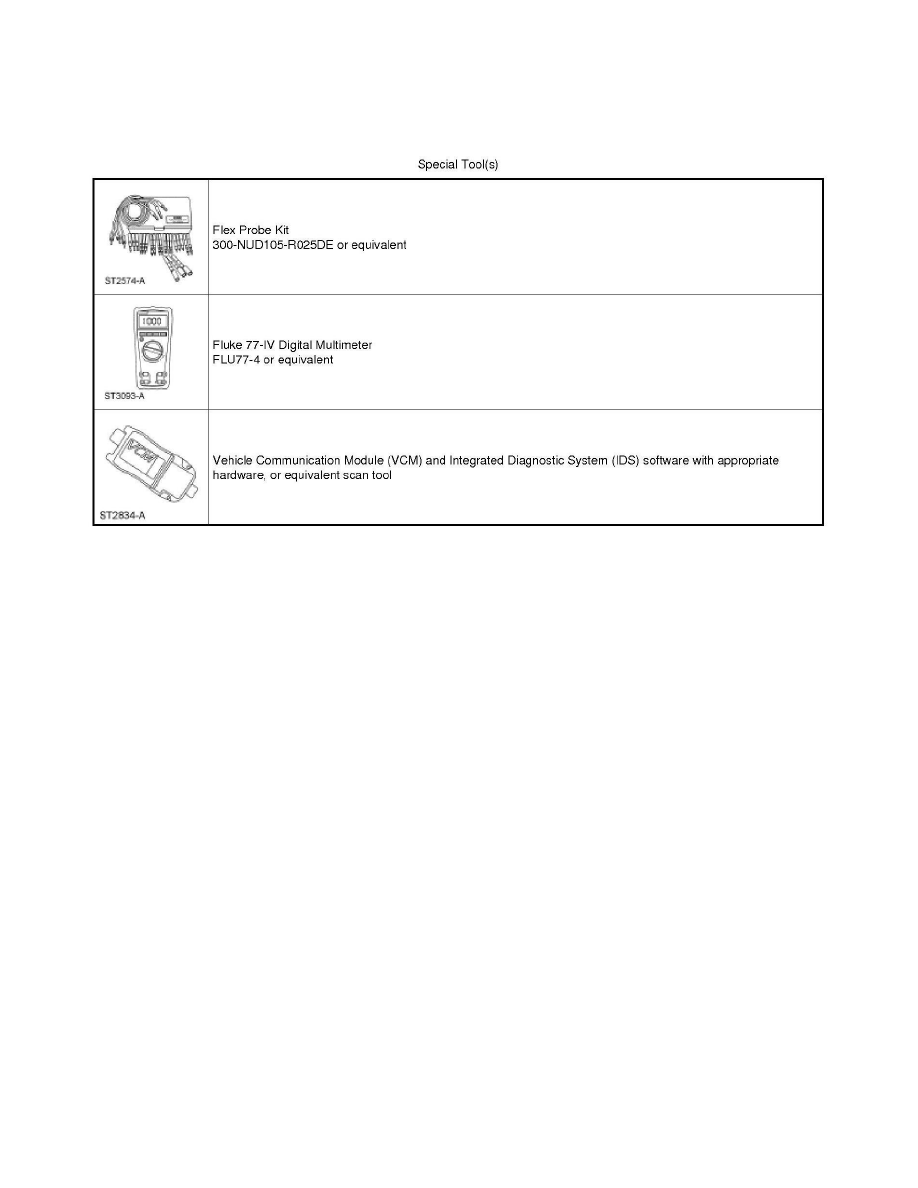Fusion FWD L4-2.5L Hybrid (2010)

Auxiliary Power Outlet: Initial Inspection and Diagnostic Overview
Special Tools Used With Diagnostics
High-Voltage Converter/Inverter
DC To DC Converter Control Module (DC/DC)
High-Voltage Converter/Inverter
Principles of Operation - DC to DC Converter Control Module (DC/DC)
The DC to DC Converter Control Module (DC/DC) is a liquid-cooled component that converts high voltage (179-343 volts) DC power to low voltage
(12 volts) DC power, while maintaining electrical isolation between the 2 systems. The DC/DC is enabled when the High Voltage Traction Battery
(HVTB) contactors have closed, providing high-voltage power to the DC/DC (for information on the HVTB system, refer to Hybrid Drive Systems). The
DC/DC steps the high voltage down to a low-voltage (between 12 and 15 volts, depending on vehicle needs), providing power to the vehicle low-voltage
battery systems. The DC/DC also charges the 12-volt battery through the low-voltage battery cables as necessary, eliminating the need for a conventional
engine-driven generator. Depending on vehicle and environmental conditions, the DC/DC is capable of outputting as many as 145 amps to the 12-volt
battery.
The DC/DC is liquid-cooled and is part of the Motor Electronics Cooling System (MECS). In addition to the DC/DC, the MECS also provides cooling
of the Electronically Controlled Continuously Variable Transmission (eCVT). For information on the MECS, refer to Transmission Cooler, A/T.
The DC/DC communicates on the High Speed Controller Area Network (HS-CAN). When a fault is sensed by the DC/DC, a DTC is set and can be
retrieved using a scan tool connected to the Data Link Connector (DLC). The PCM communicates charging needs of the 12-volt system to the DC/DC
over the HS-CAN, enabling the DC/DC to control low-voltage charging operations.
The DC/DC receives the following HS-CAN messages:
-
Transmission Control Module (TCM) high-voltage input, via the TCM
-
Ignition status, via the Instrument Panel Cluster (IPC)
-
MECS coolant temperature, via the PCM
-
"Ready Indicator Light" illumination request, via the PCM
-
Transaxle gear mode, via the PCM
-
DC/DC enable and low-voltage set point request, via the PCM
Faults with the DC/DC system that cause low or excessively high 12-volt battery voltage will result in the DC/DC sending a HS-CAN message to the IPC
requesting the CHECK CHARGING SYSTEM message be displayed in the message center.
High-Voltage Cable Assembly
